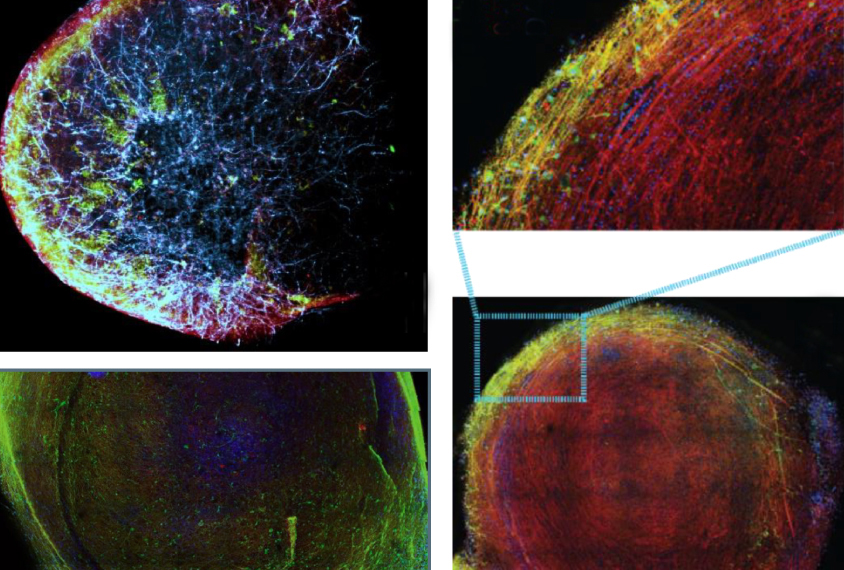
Mass-produced organoids hint at diversity of autism
Researchers have analyzed thousands of brain organoids derived from six autistic people, gaining the potential to rapidly screen drugs.
Researchers have analyzed thousands of brain organoids derived from six autistic people, gaining the potential to rapidly screen drugs. The organoids can also help them study autism’s biology.
For example, they have found an excess of brain activity in the organoids and have begun to probe the effects of mutations found in autistic people.
They detailed the unpublished results yesterday at the 2019 Society for Neuroscience annual meeting in Chicago, Illinois.
Researchers typically produce only a few organoids from a single person. Making hundreds instead enables researchers to more robustly evaluate differences among people.
The high-throughput setup can also help researchers analyze variability among organoids from each person, says lead investigator Michael Nestor, director of neural stem cell research at the Hussman Institute for Autism in Baltimore, Maryland.
“We’re wondering if variability itself is a biological readout,” Nestor says.
Nestor’s team reprogrammed skin cells from six people with autism and four controls to create stem cells. They put these cells, along with a cocktail of growth factors, into dishes with 96 small wells — producing 96 potential organoids in each dish.
Simple shape:
After two weeks, they transferred the clumps of cells in the wells to pieces of high-tech mesh. This enables oxygen and nutrients to bathe the organoids so that more of them survive. It also causes the cells to spread out. Many brain organoids are spherical, but these take on a flattened shape.
The shape enables researchers to tag cells or record electrical activity without disrupting the organoid’s structure, “which is really convenient for us,” Madel Durens, a postdoctoral research fellow in Nestor’s lab, said while presenting the work.
The team tagged organoids with markers for excitatory neurons, which boost brain activity, and inhibitory neurons, which lower it. Five of the six autism organoid populations have fewer inhibitory cells than the control organoids do.
Preliminary data suggest that these organoids have a shortage of a class of inhibitory cells called parvalbumin interneurons, the researchers say.
The findings also hint at a signaling imbalance in these organoids.
The researchers recorded electrical activity in the organoids, using arrays of tiny electrodes. They found that neurons in two of the three autism organoid populations they tested fire more often than those in three control populations, suggesting that the organoids from autistic people have weak brakes on their activity.
They then obtained data on mutations in the six autistic people. They used the gene-editing technology CRISPR to decrease the expression of one of the mutated genes, COL6A3, in control organoids. The resulting organoids also have too few inhibitory cells, linking the mutation to this effect.
The researchers plan to use this approach to probe the effects of other mutations found in people with autism.
For more reports from the 2019 Society for Neuroscience annual meeting, please click here.
Recommended reading

Expediting clinical trials for profound autism: Q&A with Matthew State

Too much or too little brain synchrony may underlie autism subtypes
Explore more from The Transmitter

Mitochondrial ‘landscape’ shifts across human brain

